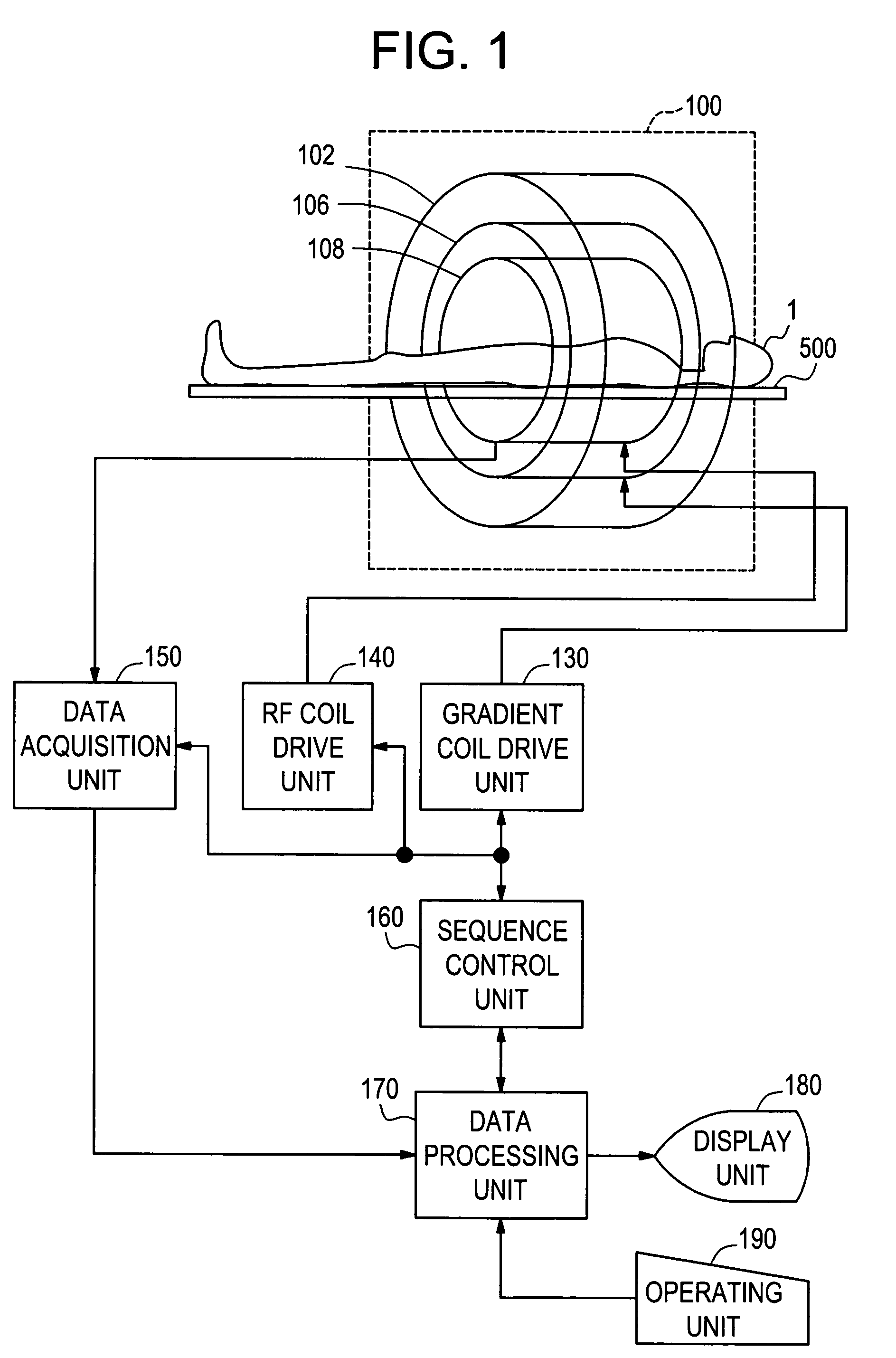MR imaging method and MRI system
a technology of mr imaging and mri, applied in the direction of reradiation, measurement using nmr, instruments, etc., can solve the problems of inconvenient ssfp method, inability to separate water from fat, band artifacts in images constructed in the method employing fat suppressing pulses or images constructed according to femr techniques, etc., to achieve accurate and decisive verification, short scan time
- Summary
- Abstract
- Description
- Claims
- Application Information
AI Technical Summary
Benefits of technology
Problems solved by technology
Method used
Image
Examples
first embodiment
Advantages of First Embodiment
[0174]Since the SQFWI technique is adapted to the SSFP method that is implemented based on the contents of the PSD, after the spins in water and fat are excited in the SSFP method, an image whose water and fat components can be separated from each other can be constructed.
[0175]According to the contents of the PSD employed in the present embodiment, the repetition time TR is set to the product of the in-phase time by m (where m denotes a natural number) in order to implement the SSFP method. Consequently, a signal induced by water and a signal induced by fat alike are affected by the inhomogeneity in a static magnetic field. Eventually, the adverse effect of the inhomogeneity in a static magnetic field can be canceled.
[0176]Moreover, in the present embodiment, unlike the method described in Japanese Unexamined Patent Application Publication No. 2001-414, that is, the phase cycling SSFT fat / water image construction method, it is unnecessary to change the...
second embodiment
[0178]FIG. 7 shows the configuration of an MRI system in accordance with the second embodiment of the present invention.
[0179]The MRI system shown in FIG. 7 has the same components as the MRI system shown in FIG. 1 except a magnet system 100′. The magnet system 100′ will be mainly described below.
[0180]The magnet system 100′ includes a main field magnet unit 102′, a gradient coil unit 106′, and an RF coil unit 108′.
[0181]Each of the main field magnet unit 102′ and coil units comprises a pair of magnets or coils opposed to each other with a space between them. Moreover, the magnets and coils have a substantially disk-like shape and share the same center axis. The object of imaging 1 lying down on the cradle 500 is carried into the bore of the magnet system 100′ by means of a carrying means that is not shown.
[0182]The main field magnet unit 102′ produces a static magnetic field in the bore of the magnet system 100′. The direction of the static magnetic field is substantially orthogona...
PUM
 Login to View More
Login to View More Abstract
Description
Claims
Application Information
 Login to View More
Login to View More - R&D
- Intellectual Property
- Life Sciences
- Materials
- Tech Scout
- Unparalleled Data Quality
- Higher Quality Content
- 60% Fewer Hallucinations
Browse by: Latest US Patents, China's latest patents, Technical Efficacy Thesaurus, Application Domain, Technology Topic, Popular Technical Reports.
© 2025 PatSnap. All rights reserved.Legal|Privacy policy|Modern Slavery Act Transparency Statement|Sitemap|About US| Contact US: help@patsnap.com



